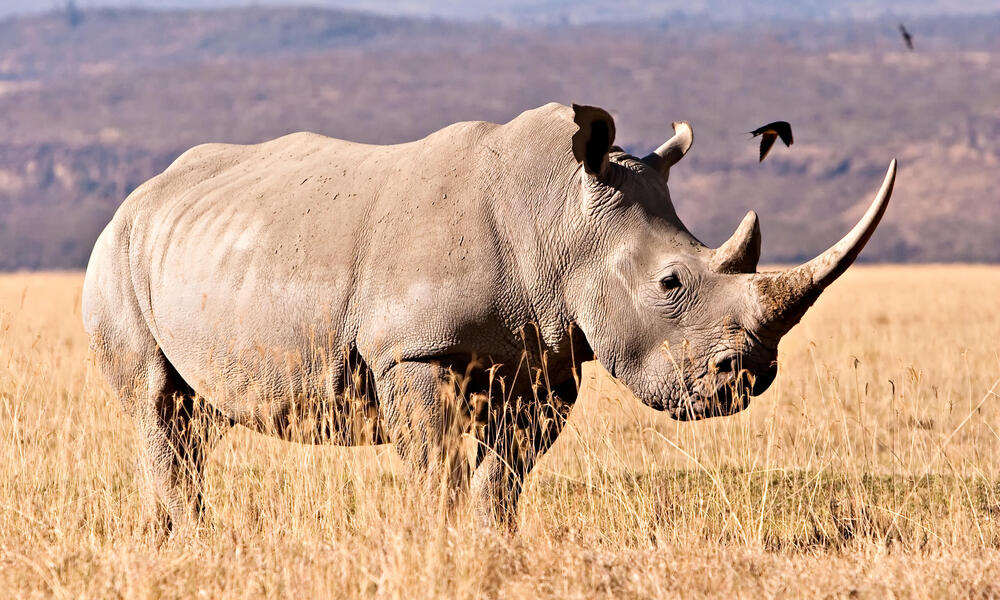World Rhino Day: A Call to Protect Africa’s Rhinos and Their Habitat

Hauwa Ali
Every year on September 22, conservationists, wildlife enthusiasts, and governments worldwide come together to mark World Rhino Day—a day dedicated to celebrating one of Earth’s most magnificent creatures while highlighting the urgent need to protect rhino populations from poaching, habitat loss, and environmental challenges. In Africa, where the majority of the world’s rhinos live, the day serves as a stark reminder that these iconic animals face an uncertain future unless efforts to preserve their natural habitats are dramatically increased.
Rhinos, often described as living relics from prehistoric times, are an integral part of Africa’s rich biodiversity. The continent is home to two species of rhinos: the black rhino and the white rhino. While once abundant, these majestic creatures have been pushed to the brink of extinction due to decades of poaching driven by the high demand for rhino horn, particularly in parts of Asia where it is falsely believed to possess medicinal properties. In 1970, there were an estimated 70,000 rhinos in Africa, but today, fewer than 25,000 remain, according to the International Rhino Foundation.
Conservationists have made significant strides in combating poaching, but the battle to save rhinos extends beyond protecting the animals themselves. Preserving their habitats—spanning grasslands, savannahs, and forests—is equally important for the long-term survival of these
Rhinos play a critical role in maintaining the health of ecosystems. As mega-herbivores, they help shape the landscape by grazing on vegetation, which in turn supports a wide variety of other species. Rhinos create natural clearings that allow grasses to grow, providing food for smaller herbivores like zebras and antelopes. By preserving rhino habitats, conservationists are also ensuring the survival of countless other species that depend on these ecosystems.
However, many of these habitats are under threat due to human activities such as agriculture, urbanization, and infrastructure development. As human populations in Africa continue to grow, the demand for land increases, leading to deforestation and the fragmentation of wildlife habitats. This encroachment limits the space available for rhinos to roam, breed, and find sufficient food and water.
Additionally, climate change poses another significant threat to rhino habitats. Changing rainfall patterns, prolonged droughts, and rising temperatures are altering the landscapes that rhinos depend on, making it harder for them to survive. In some areas, water sources are drying up, and the grasslands that rhinos graze on are becoming scarce.
Despite these challenges, there are numerous success stories that show how concerted conservation efforts can make a difference. Across Africa, wildlife reserves, national parks, and community-led conservation initiatives are working to protect rhinos and their habitats.
South Africa, home to about 80% of the world’s rhino population, has been at the forefront of rhino conservation efforts. Kruger National Park, one of the largest game reserves in Africa, has implemented anti-poaching units, advanced surveillance technology, and community engagement programs to safeguard its rhinos. Other countries, such as Namibia and Kenya, have also seen success through initiatives that involve local communities in conservation, allowing them to benefit economically from tourism while taking an active role in protecting wildlife.
One of the most innovative approaches to rhino conservation has been the translocation of rhinos to safer areas where they can thrive. In recent years, organizations like Save the Rhino and the World Wildlife Fund have partnered with governments to move rhinos from areas with high poaching threats to more secure locations, including private reserves and other countries. For example, the ambitious project “Rhinos Without Borders” has successfully moved several rhinos from South Africa to Botswana, where they are safer from poaching threats.
However, these efforts require substantial resources—financial, logistical, and human. Preserving rhino habitats is not just about creating physical space for the animals but also about ensuring that these areas are well-managed and protected from illegal activities. It is a long-term commitment that requires the collaboration of governments, private organizations, and local communities.
One of the key lessons from successful conservation efforts is that engaging local communities is essential. In many parts of Africa, rural communities live in close proximity to rhino habitats, and their involvement in conservation can mean the difference between success and failure. Community-based conservancies, where local people are given ownership of wildlife and land, have proven highly effective in both reducing poaching and improving the livelihoods of those living near rhino habitats.
In Namibia, for example, community conservancies have played a crucial role in restoring rhino populations. Through these conservancies, local people are empowered to manage wildlife, benefit from eco-tourism, and receive income from sustainable hunting practices. This approach not only helps protect rhinos but also strengthens the relationship between communities and conservation efforts.
On this World Rhino Day, the message is clear: the fight to save Africa’s rhinos is not just about protecting a single species but about preserving entire ecosystems. Without their natural habitats, rhinos cannot survive, and the ripple effects would be felt across the African wilderness.
As the global community reflects on the plight of rhinos, it is crucial to recognize that habitat preservation is an urgent priority. Governments must strengthen policies to protect wildlife areas from encroachment and development, while conservation organizations need continued support to fund habitat restoration and protection programs.
For rhinos to have a future, their habitats must be preserved, expanded, and managed with the utmost care. World Rhino Day is a reminder that time is running out to protect these gentle giants and the landscapes they call home.
